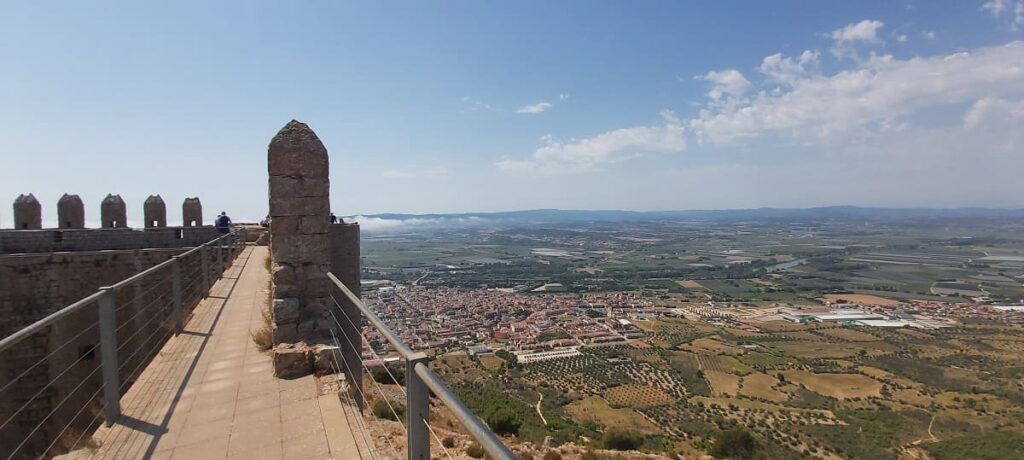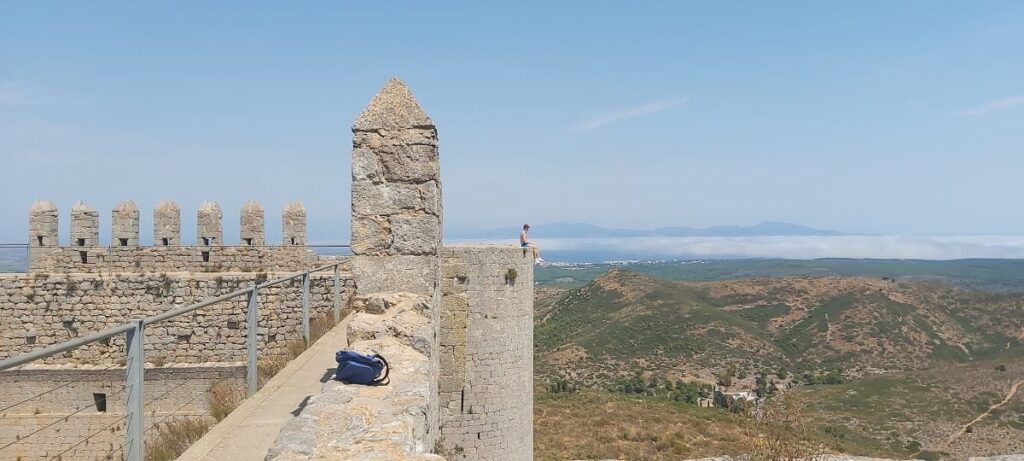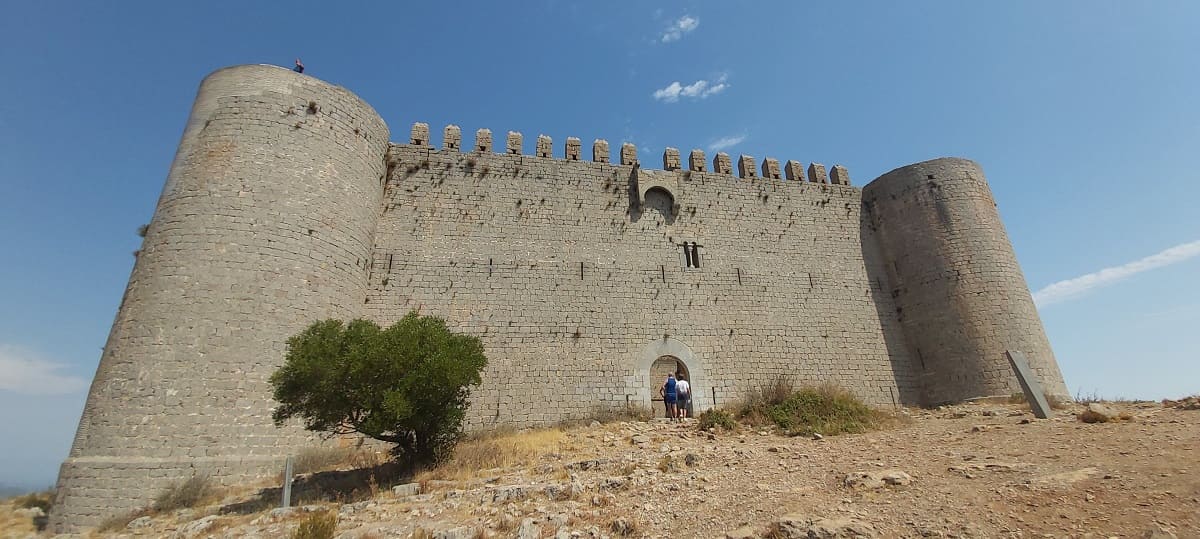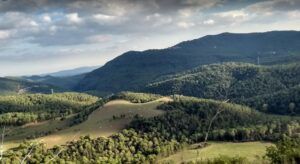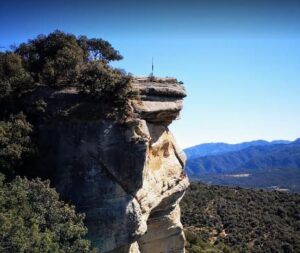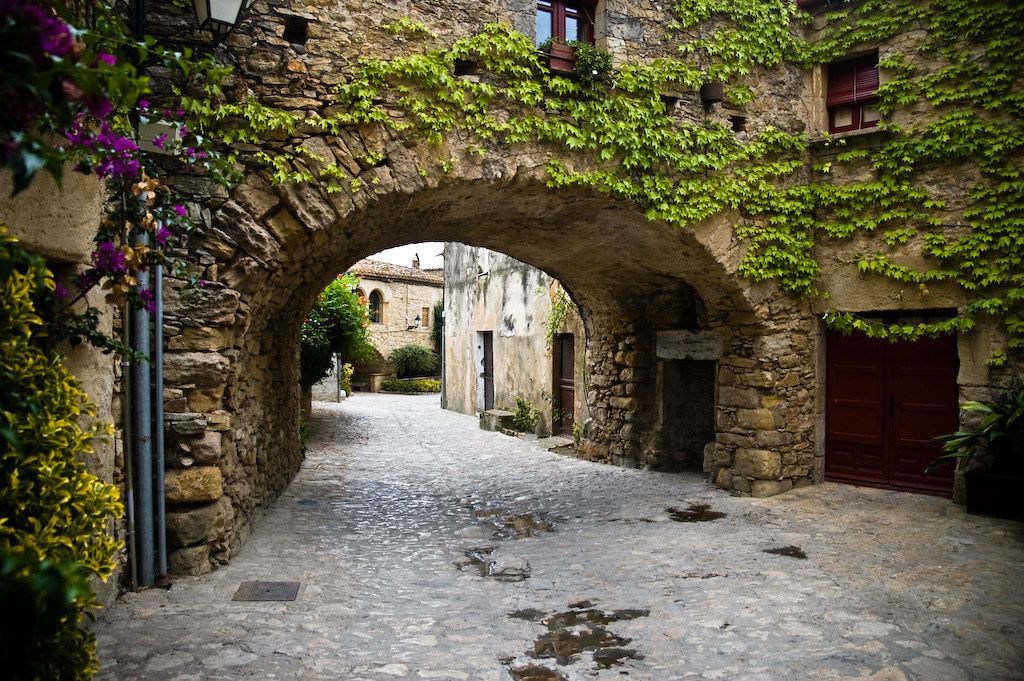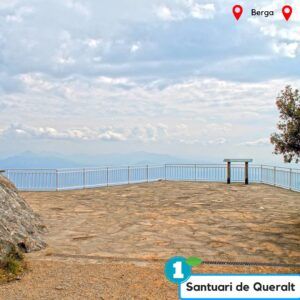The route of the Castle of Torroella de Montgrí, is one of the most famous in the area, being increasingly popular among tourists who come to visit the villages of the Costa Brava.
Details of the route to Montgrí Castle
Climbing time: 45 minutes.
Descent time: 35 minutes.
Difficulty: Medium
We will start the excursion to the Castell de Montgrí from a dirt road (duly indicated with arrows and signs), located in the northern part of Torroella de Montgrí.
Right next to the beginning of the road, you will find two parking lots where you can leave your car for free: a parking lot on the left side of the road, and another one on the right side.
In the following photo, we have marked the beginning of the road with an arrow, and the two areas to park your car in rectangles.
In the same way, we also leave you an interactive map so that you know how to get to the parking to start the route to the Montgrí Castle.
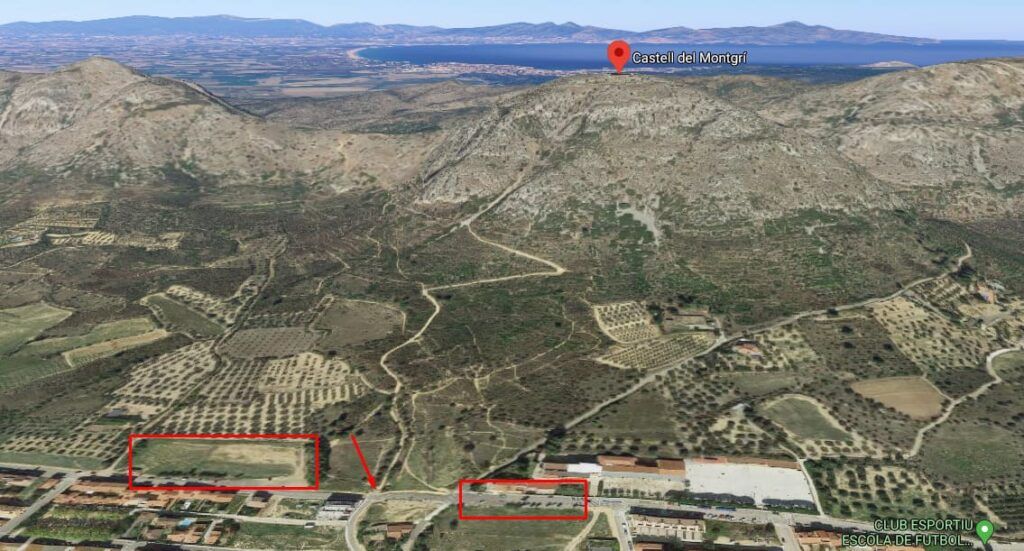
So, as we have mentioned in previous lines, we will start the route to the castle from the road (be careful not to make a mistake, because there are two beginnings of dirt road, and the good one is the one with the indications for the route: we attach a photograph of the correct path).


It is important to take into account that this road is not accessible by car (since it is a dirt road and, although it seems to be in good condition at the beginning, it becomes more complicated). We do not advise you to do the route by bike, as there are many rocky sections and the terrain is quite unstable. The best option (if not the only one) is to access the castle on foot or running.
We also advise you, if you decide to make the excursion to the Castell de Montgrí, to choose the first or last hour of the day, because if you do the route in summer (which is the most common), the sun will be a great enemy on the way up. This route is not recommended for children under 3 years old (unless we want to take them with us), nor for people over 80 years old or in poor physical shape.
After 3 minutes of walking, we will find the first intersection of paths, which we will choose the path to the left to continue with the ascent. You can also follow the main road (called “Camí dels tres pins”, which is the longest), which you will only have to turn right at the first intersection, and right again at the second intersection you come across). Another option you have (which is perhaps the fastest of all), is to go along the camí de la creu. To go this way, you must choose the first intersection on the right, and the second on the left. In the end, whichever path you choose, they will all lead you to the top.
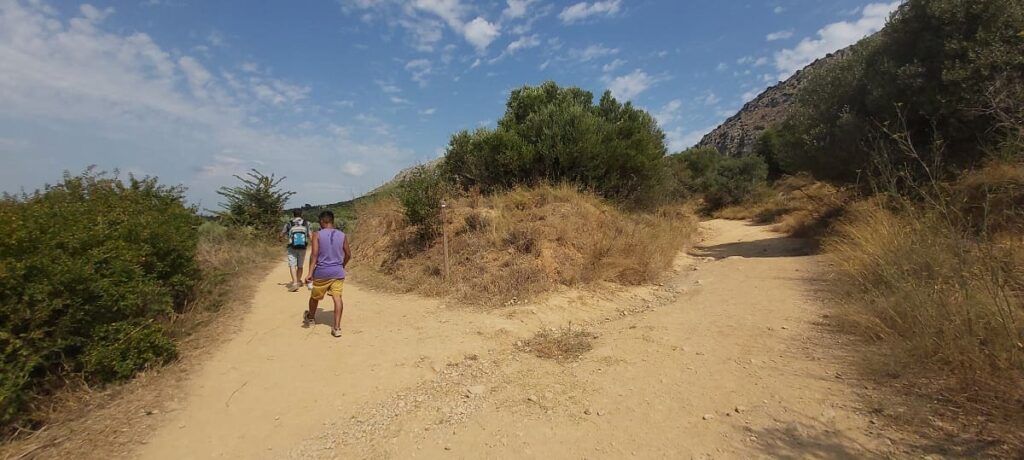
From here, we will begin to appreciate that we are gaining altitude, since along the way we will begin to have good views of the village of Torroella de Montgrí and its surroundings.
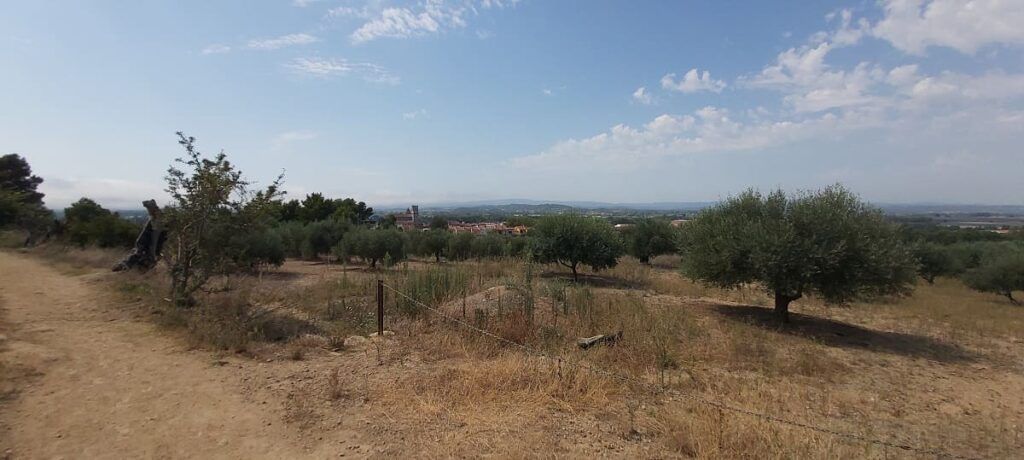
For the next 5 minutes, the road is fairly flat, wide and free of rocks. And what we will be doing is to go around the castle on the left side, and then we will start the ascent to the fortification. At this point (as well as along the trail), we will not find many trees that offer us some shade to stop and breathe for a few minutes. So when we find one, keep it in mind because you will find few others.
From this point of the path, we will have a spectacular view of the castle from its feet. So, a good time to take photos before breaking a sweat and concentrating on the climb.
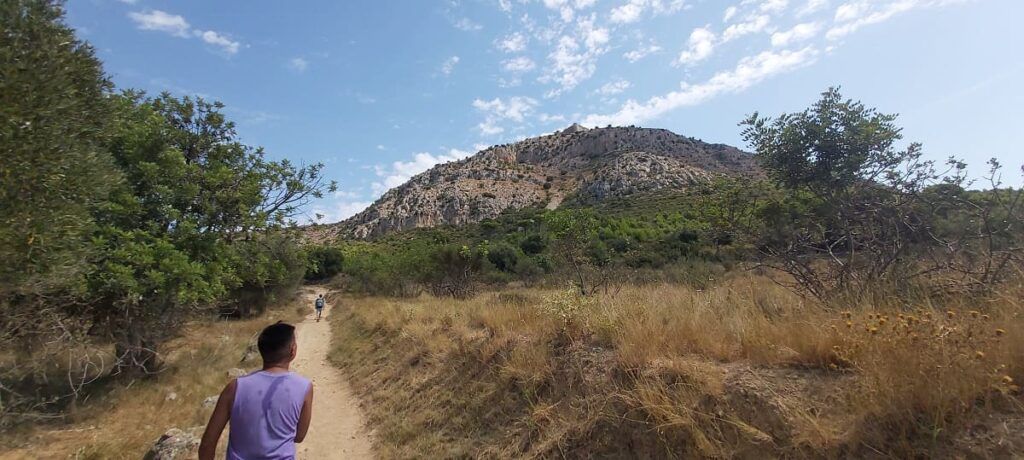
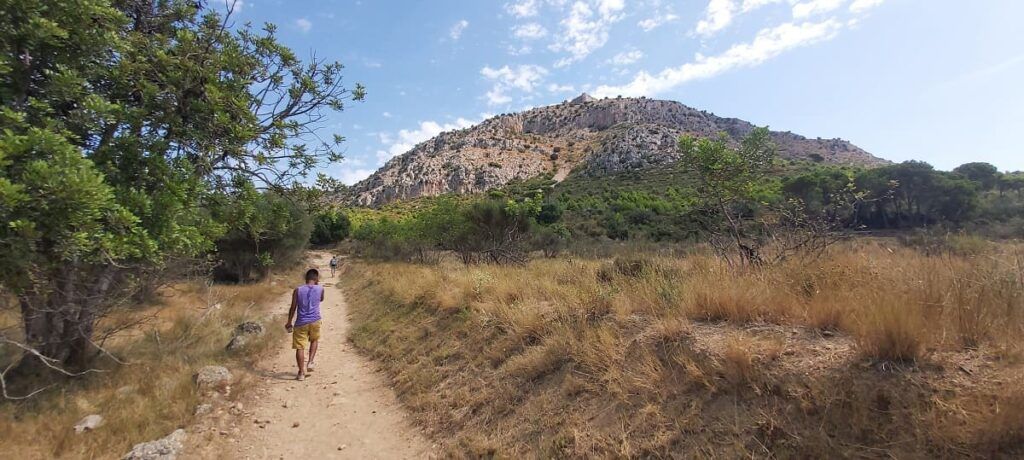
Soon we will find the second intersection, which we will pull to the left path again, to follow the route to the top.
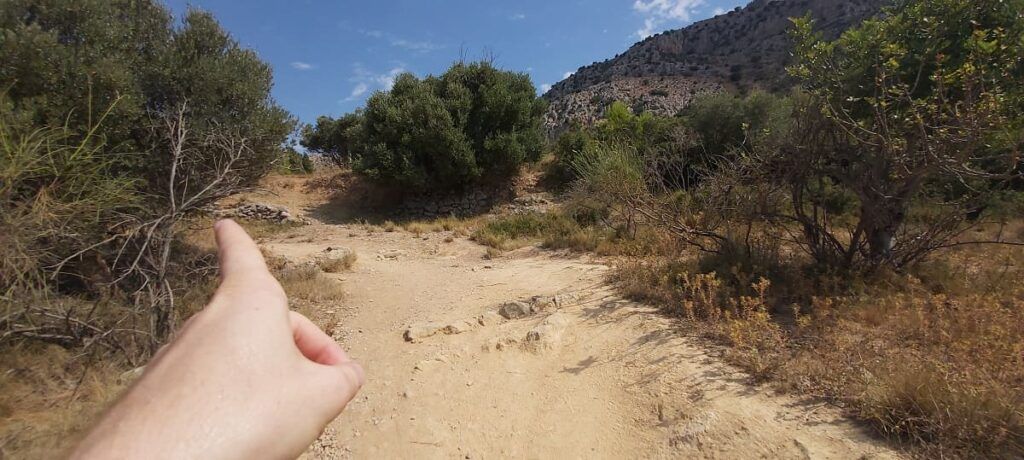
From this point on, the path starts to become narrower and narrower, steeper and steeper, with more and more stones and rocks that slow down the constant progress we have been making until now.
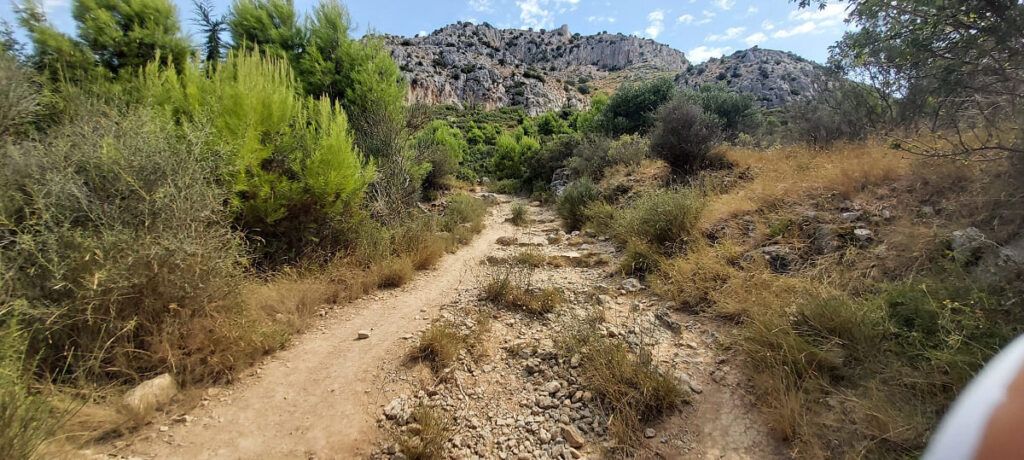
It is important to keep in mind that, along the ascent, we will come across crossroads or intersections. That is why we must always pay attention to the marks on the stones, which indicate the correct path at all times.
- Good road marking: = (red and white colored stripes).
- Wrong way mark: X (white cross).
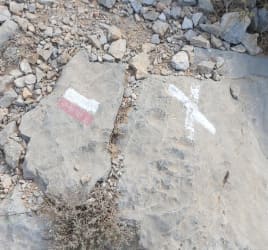
The first of the 3 points of interest that we found along the way, is a small house made of stones, in which you can enter and take refuge from the heat for a few moments, while we regain strength to continue climbing to the castle.
As we have been commenting, the path becomes more and more aggressive, and the encounter of stones and rocks intensifies, making the ascent more difficult.

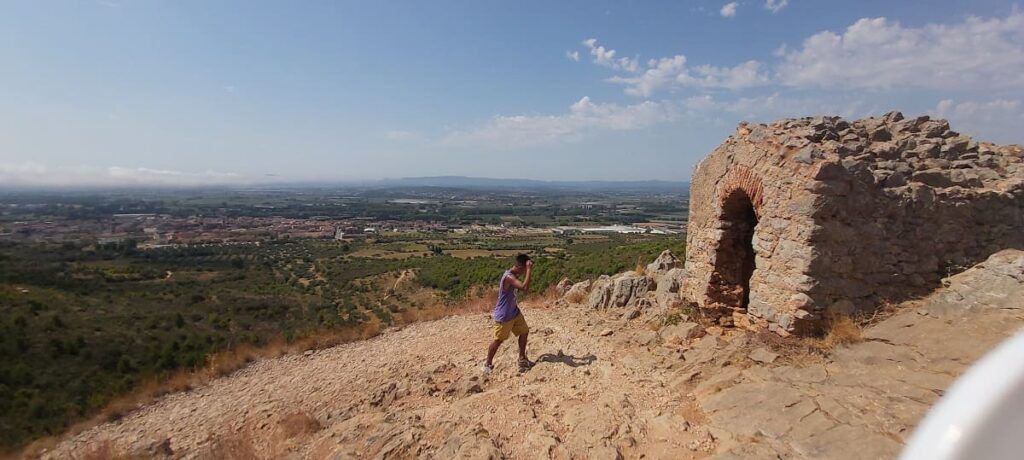
When we follow the path, we see that indeed, there is less and less land and more and more stones, which is so until we reach the Coll de la Creu de Santa Caterina.
From the section of the cottage that we have discussed in previous lines, passing by the monument of Coll de Santa Caterina, to reach the castle, we must warn that the stones through which we will pass are increasingly worn by the continuous use and overcrowding. This means that they are becoming increasingly polished, and slipping can be a common occurrence if you are not careful where you step.
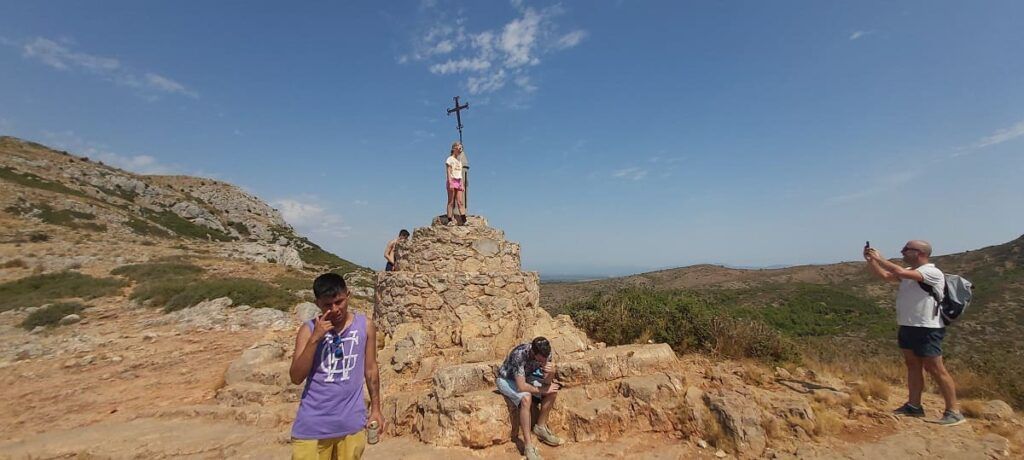
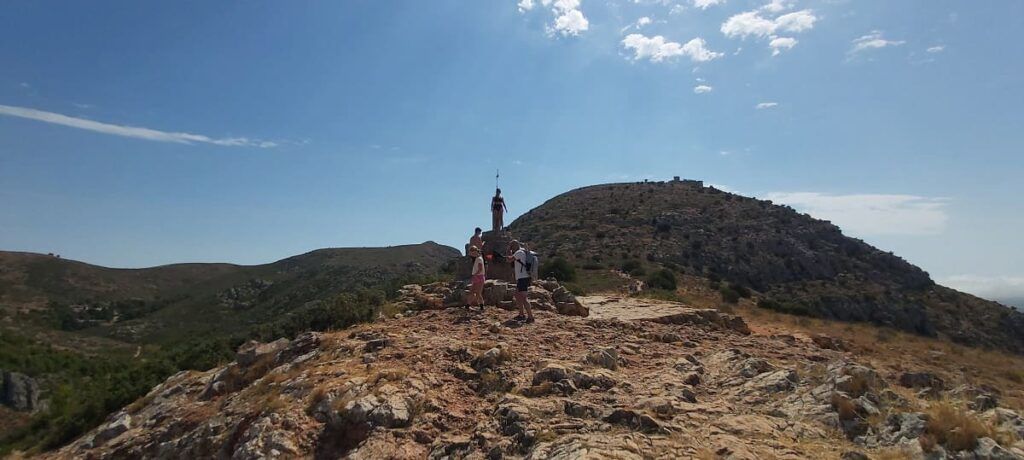
So, once we arrive at the Coll de la Creu de Santa Caterina, we will be able to appreciate incredible views of the Golf of Roses, Empuriabrava, the villages of Albons and Viladamat, and the entire north coast from Torroella.
To the south, however, we will see the villages of Torroella, Begur, the Gavarres massif in the background, and the entire coast from Torroella to the south of the Costa Brava.
Indeed, this is a point where we can appreciate the two parts (north and south) of the Costa Brava.
In fact, we must not overlook the fact that this hermitage was founded in 1392, by the friars Berenguer Desguell, Bartomeu Cabotes and Pere Trasió (more popularly known as “el frares de Montserrat”).
The reason and meaning of this construction was to honor the co-patron saint of Torroella de Mongrí: Santa Caterina d’Alexandria.
In fact, the popular tradition is still preserved of having a meeting every November 25th at this point (in honor of the Saint’s day), to commemorate this point as a place of salvation: it became a popular devotion during the XVII and XVIII centuries, when in times of wars, famine and plagues, the citizens went to this hermitage to keep away diseases and contagions.
Once we have visited the hermitage of Santa Caterina and we have taken a couple of pictures to immortalize the moment, now we just have to get to the famous Montgrí Castle, which we will see from the hermitage.
The road to the imposing fortification is made of worn stones and an “S” shaped path. Some daring people choose to cross vertically and reach the castle transversely. Many others (the majority) follow the path until they reach the top.
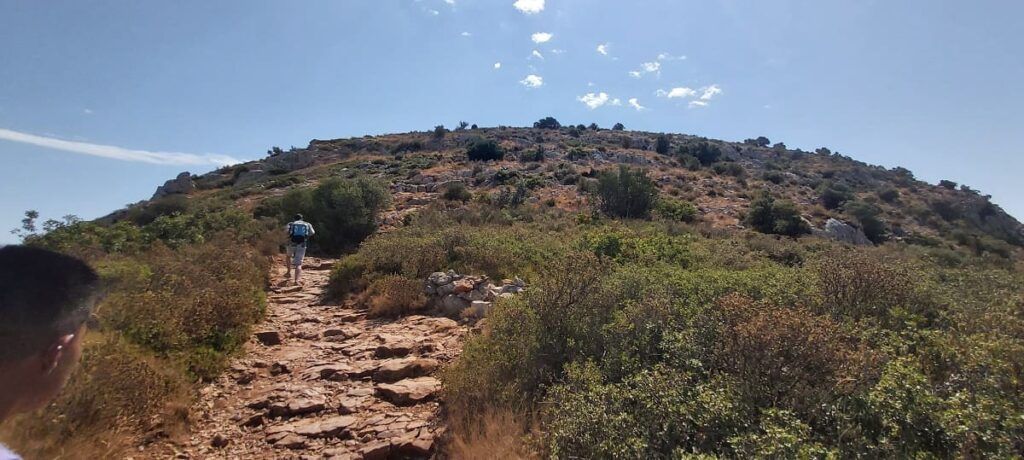
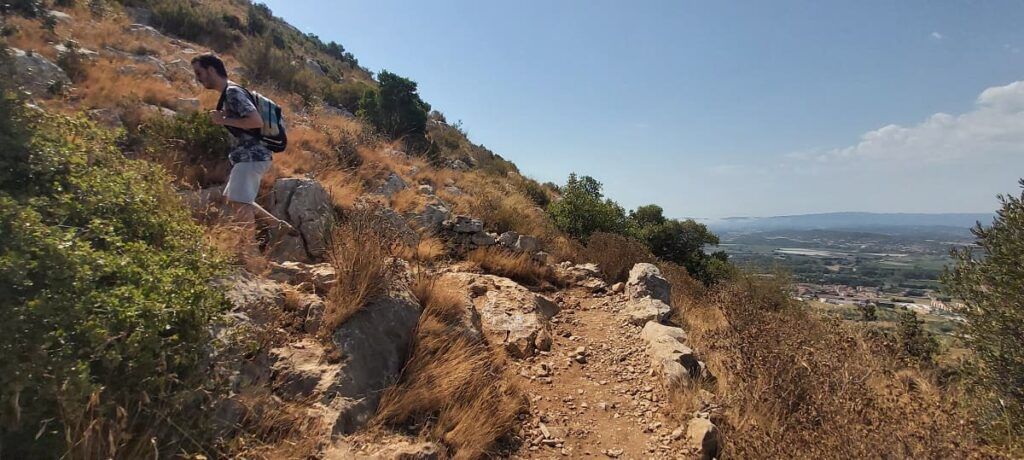
We will know that we have arrived at the famous Torroella de Montgrí Castle, when we find the following identification on the way:
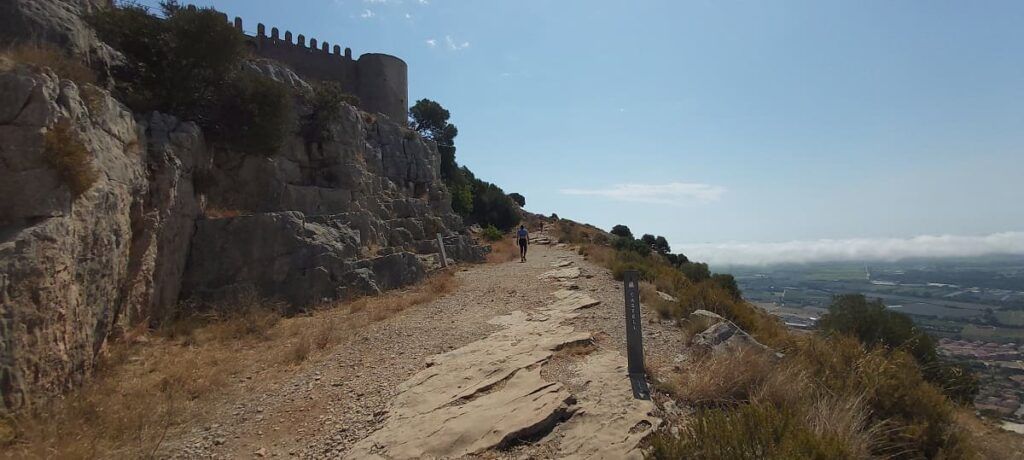
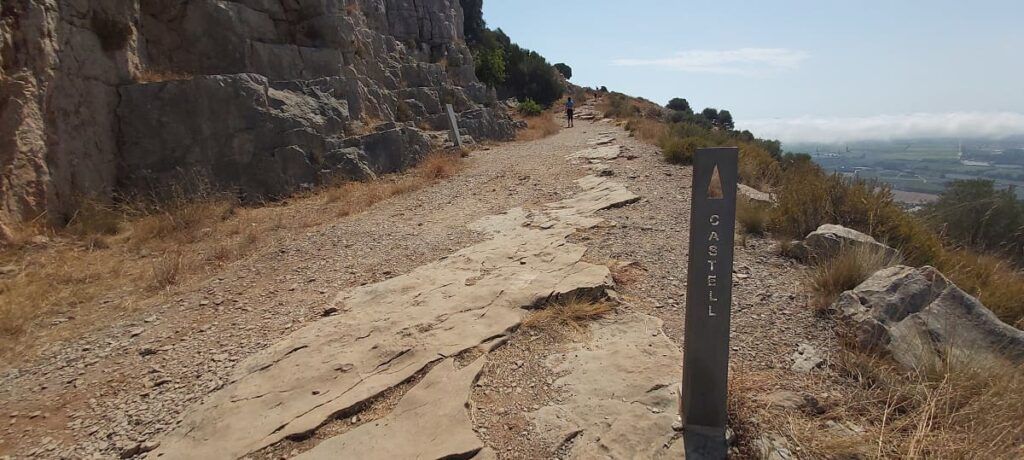
Once we arrive at the foot of the castle, we will be surprised by its 13 meters high, and its imposing walls that make this a special and unique fortification.
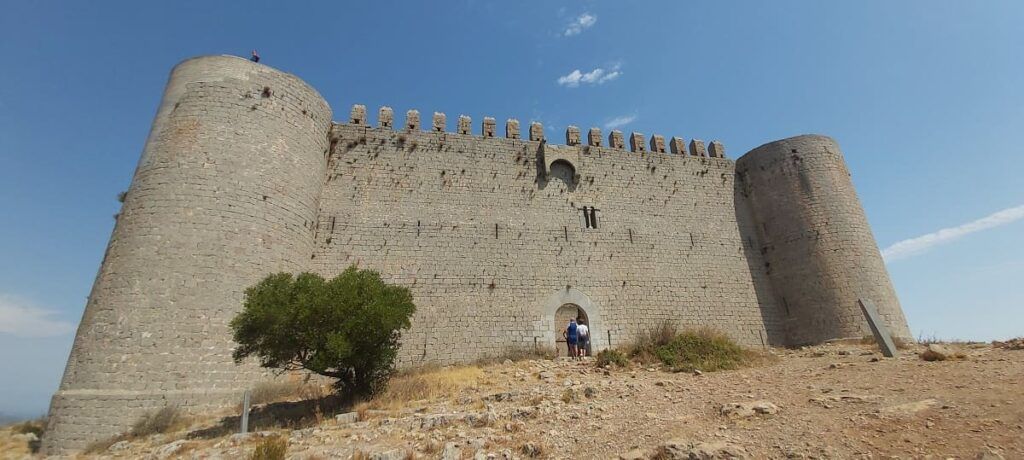
History of Montgrí Castle
This castle is said to have been built between 1294 and 1301, due to some problems between the Counts of Barcelona (and Kings of Aragon) and the Counts of Ampurias, who owned most of the land in the area (obviously, we are referring to the region of Alt Empordà and Roussillon).
Thus, this fortification was carried out by orders of Jaume II, in order to monitor the movements of the counts of Empuriabrava.
As can be seen, the works, which began in 1294, were never completed. Thus, since then, it ceased to be a strategic and control point as such, and became a place of cultural interest and symbol of this area.
Architectural features of Montgrí Castle
The structure of the castle responds to a preconceived plan. It is part of a model of oriental type fortresses, which spread throughout Europe during the 12th and 13th centuries after the Crusades. They are castles of regular plan, with cylindrical towers located on the walls.
Of the castle, only the walls that form the perimeter were built, a square of 31 meters on each side with four towers attached to each corner. The walls have a height of 13 meters, and are crowned by battlements.
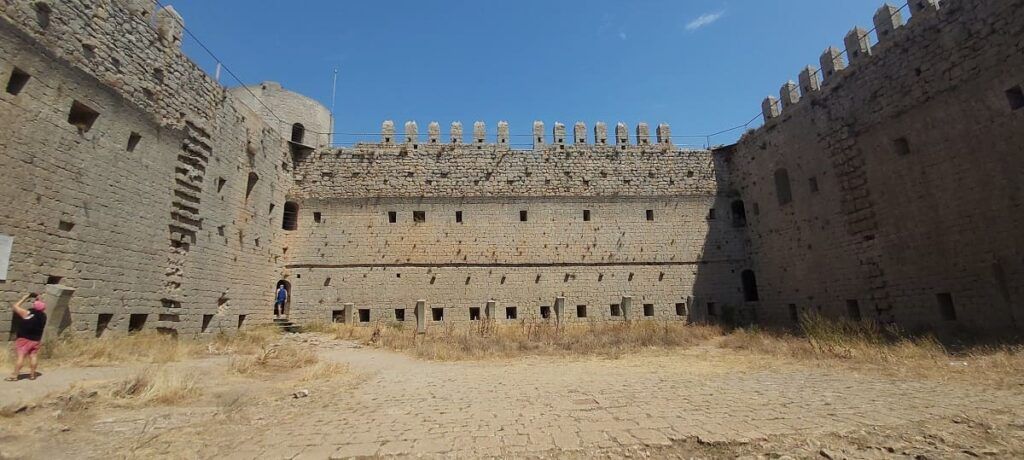
The interior of the castle is arranged around a central courtyard paved with stone. Underneath, a large covered cistern that collected rainwater has been preserved.
Four wings of outbuildings were to be built around the courtyard, but these were never built. Despite this, on the inside of the walls, some elements can be distinguished (ligatures and arches and vaults), which allow us to decipher the structure that the building would have had.
Outside the castle, the remains of a wall can be seen on the south façade, and a large cistern on the northern slope of the mountain.
Visiting the Castle
The entrance is completely free, and you can (in fact you must, once you get here) climb to the top of the castle by a spiral staircase, where you can enjoy incredible views of most of the Costa Brava.
From the top of the castle, we can take amazing pictures like the ones below.
